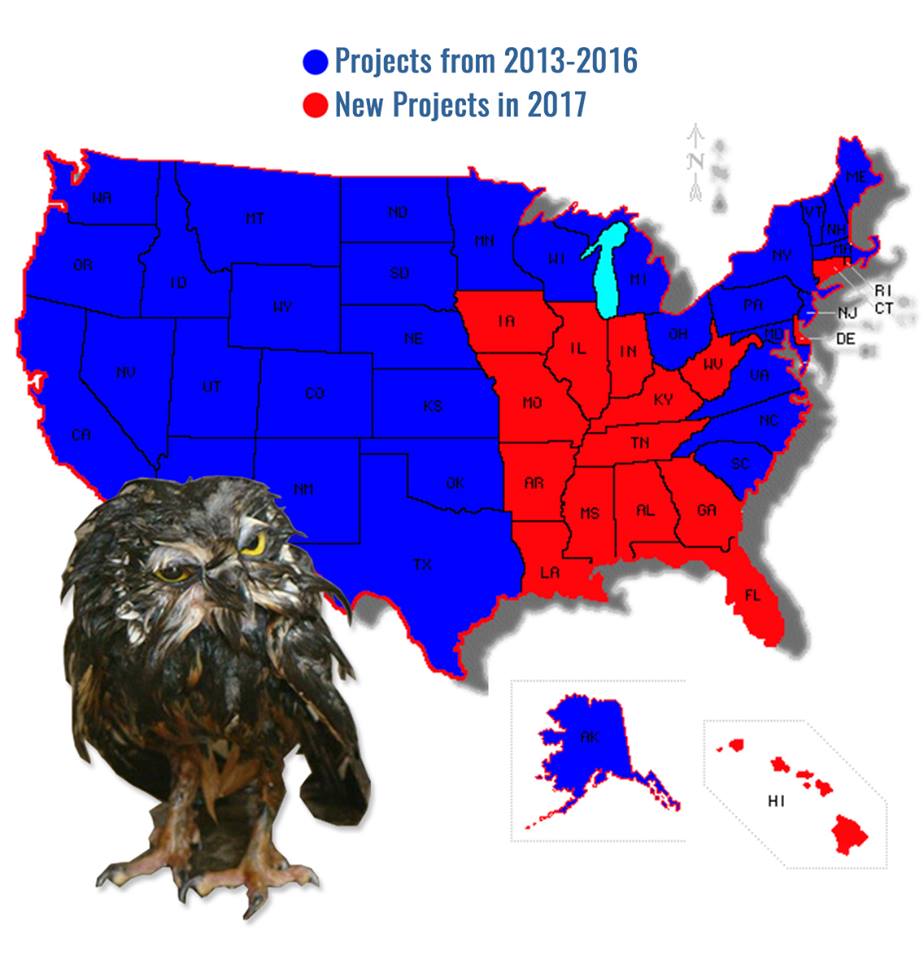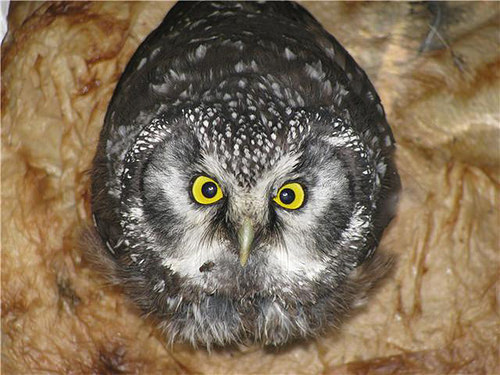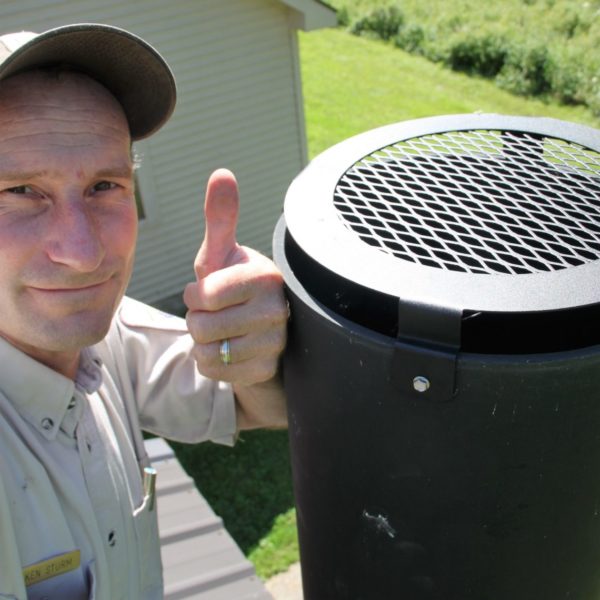
A typical vault toilet restroom installed at state and national parks (flickr photo courtesy of Grand Canyon National Park, shared under a CC BY 2.0 license).
By Emily Clark
If you enjoy being out in nature, chances are you have been to a park or recreation area, used the facilities, and didn’t think twice about the engineering involved in putting a bathroom in a remote area. Trailheads and campgrounds don’t always have developed plumbing systems, but they still need to accommodate visitor waste. The solution in most cases is vault toilets, which are relatively inexpensive to install and low maintenance. These systems have been around for decades and function like out-houses. There is a seat placed over a hole, which sits over a waste collecting vault or “basement” installed below ground level. Vaults are made of reinforced concrete, which can hold large amounts of waste and use no water. Vent pipes are located at the back of the restroom building and, when heated by the sun, provide airflow that keeps bathroom smells to a minimum.
This worked great until some very surprised people got the shock of their lives while sitting on the john! At the Boise National Forest about seven years ago, wildlife biologist Joe Foust received one of his most interesting calls. An owl was trapped in the toilet, and he was sent to investigate. Sure enough, when Foust peered down the hole, a set of eyes was staring back at him. After a very messy rescue with cleanup required, Foust was able to release the bird, a tiny Boreal Owl. His story and the accompanying picture quickly made their way around the biology social network.
Luckily, one of those people reached was Roger Smith, co-founder of the Teton Raptor Center (TRC). The TRC is a non-profit conservation organization based in Wyoming. Its mission is to advance raptor conservation through education, research, and rehabilitation. Along with Foust’s Boreal Owl, TRC learned of other incidents involving trapped raptors including Northern Saw-whet, Western Screech, and Long-eared Owls, as well as other cavity-nesting birds including Wood Ducks, American Kestrels, and various species of woodpeckers. Vents attract birds because they look like tree cavities, which are used by some species for nesting, storing food, or roosting. Unlike cavities in trees, however, once inside these vent pipes, the smooth surface of the pipe doesn’t allow their claws to grip, the tall vertical orientation is too much, or the birds simply fall into the vault and become trapped. Without a kind rescuer willing to get dirty, the bird will die. This is not an easy or pleasant topic to study, so no one knows exactly how many birds end up in the basements. However, with many thousands of vault toilets spread across the country, the risk is significant. While the TRC’s primary focus is raptor conservation, this issue potentially affects so many species of birds that the TRC decided it had to do something about it; enter the Poo Poo Project.
Through a series of trial and error efforts, TRC designed their own, locally manufactured vent screens, which effectively stop birds from entering the pipes without disrupting ventilation from the toilet. Not only is TRC’s Poo Poo Screen easy to install and durable, most importantly, it is inexpensive. Compared to other products on the market which retail for about $100, at only $29.95 (less in bulk) the Poo Poo Screen is a great option, especially for properties with small budgets or with many vault toilets to cap.
According to David Watson, the TRC Poo Poo Project Coordinator, “We wanted to make a difference nationwide . . . one of our key goals is to create awareness.” By producing a high-quality product at an affordable price, word spread quickly and made TRC’s work go far beyond awareness.
As more and more biologists and land managers learn about the risk of vault toilets to wildlife, they want to fix it. In Watson’s words, the Poo Poo Project provides a “simple solution to a nationwide problem.”
Even better, the TRC team started a “Sponsor a Screen” campaign, in which donors can cover the cost of screens that then get distributed directly to parks or recreation areas in need. Lack of budget is no longer a reason for not capping ventilation pipes. Project partners are both public and private organizations. They include agencies that manage large expanses of land like the National Park Service and U.S. Fish & Wildlife Service, as well those that work on smaller scales, like county parks.

Teton Raptor Center’s Poo Poo Project reaches all 50 states in 2017 (photo courtesy of the Teton Raptor Center).
Now in its seventh year, 2017 marks some major milestones for the Poo Poo Project. It has distributed a whopping 10,000+ vent screens to over 330 partners in all 50 states. This is an incredible feat for the small organization. Watson credits the “great team of people at the Teton Raptor Center.” In addition to the hard-working staff, TRC relies on its team of dedicated volunteers, who put in over 9,000 volunteer hours last year alone. Still gaining momentum, volunteers help the Poo Poo Project meet its high demand and keep costs low. TRC is a great example of how a small organization can make a big difference in bird conservation.
How can you help?
If you see a vault toilet that doesn’t have a screen, please contact the facilities manager. You can let them know about the risk open pipes pose to wildlife, and offer a great solution: Poo Poo Screens. If they say screens aren’t in the budget, tell them about the “Sponsor a Screen” program. Download the Teton Raptor Center’s brochure to distribute. Click to learn more about the Poo Poo Project, the Teton Raptor Center, and other ways you can help.


 English
English  Español
Español 

